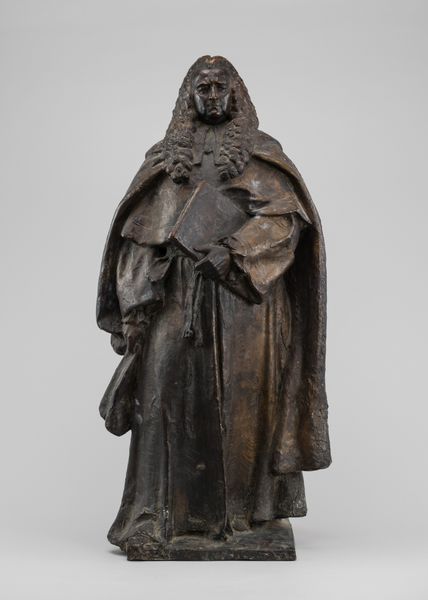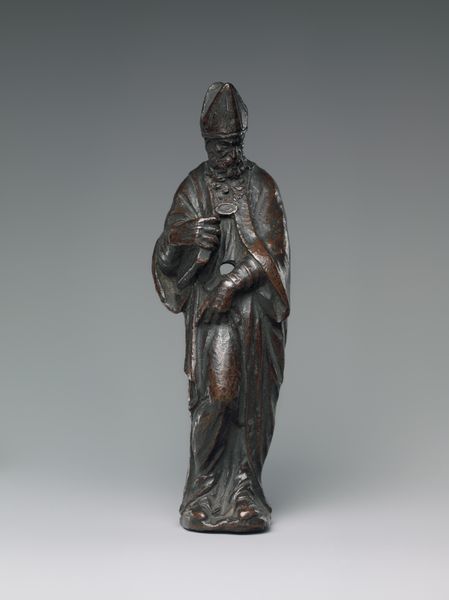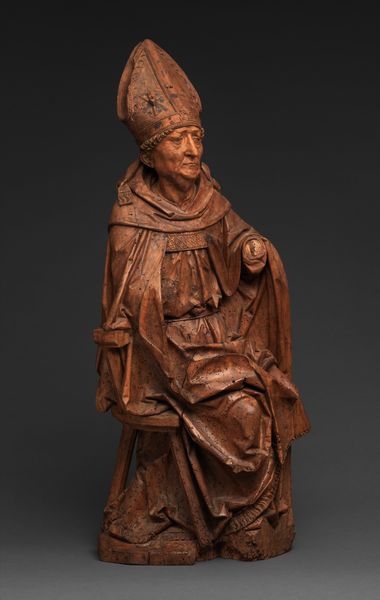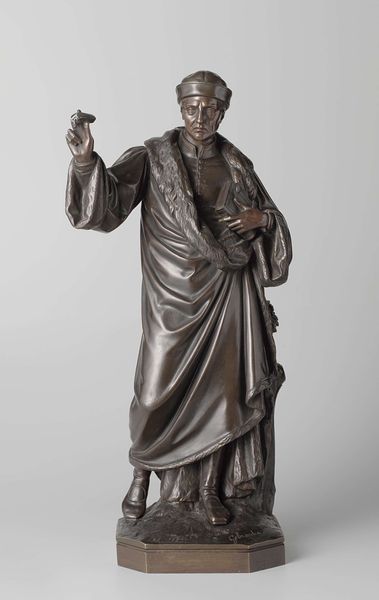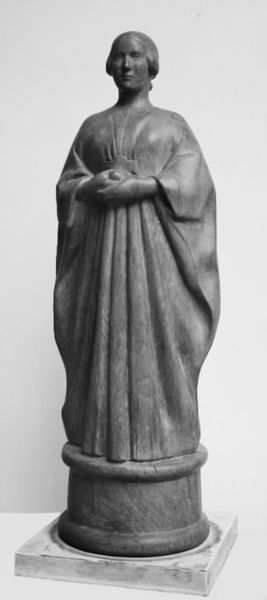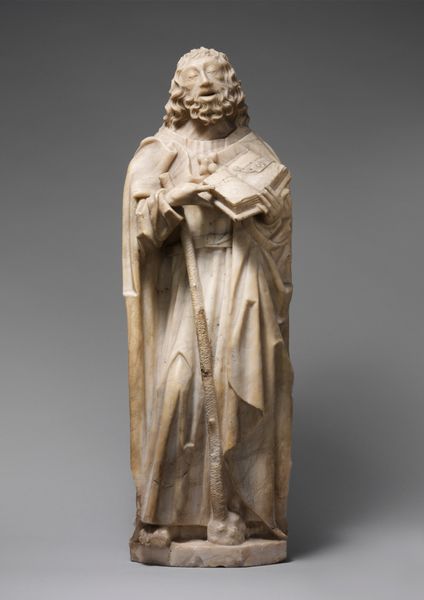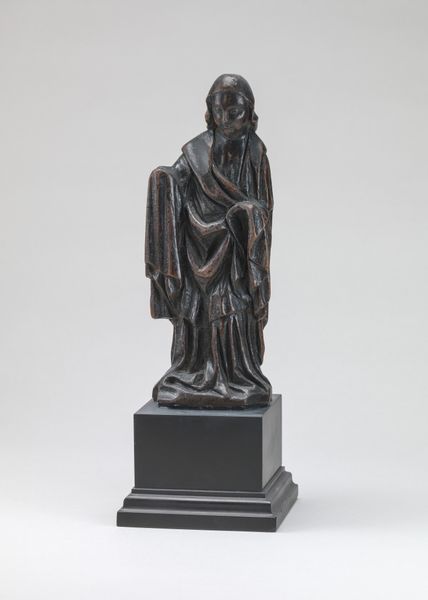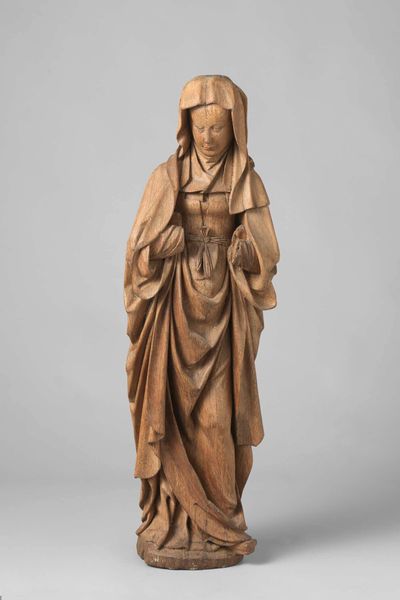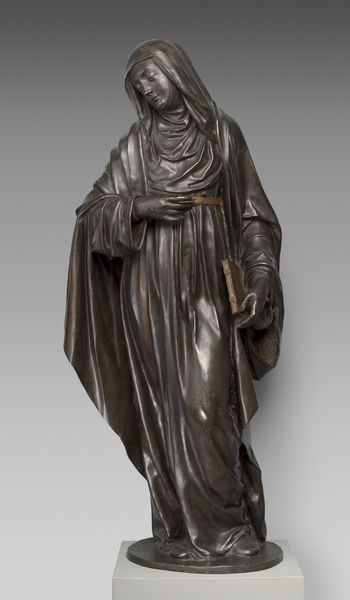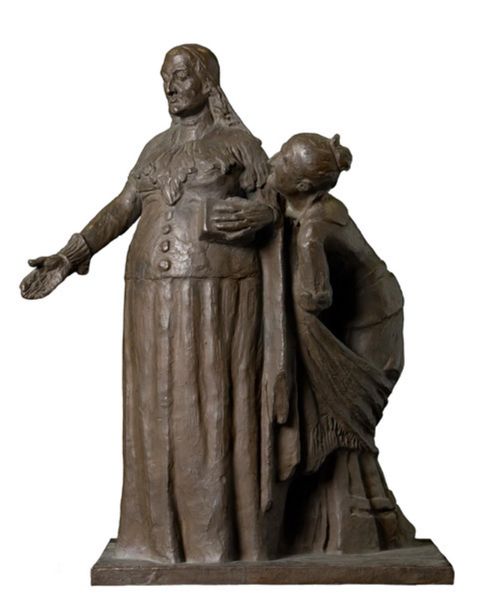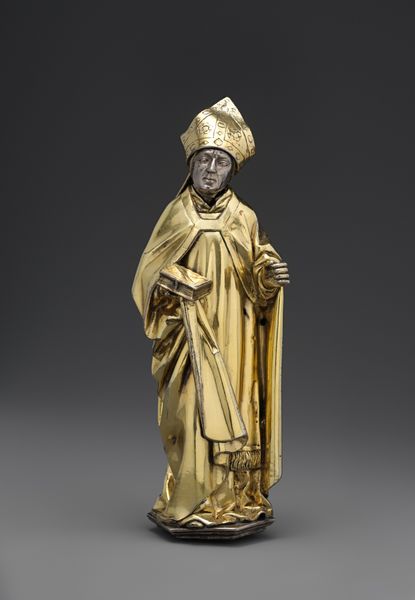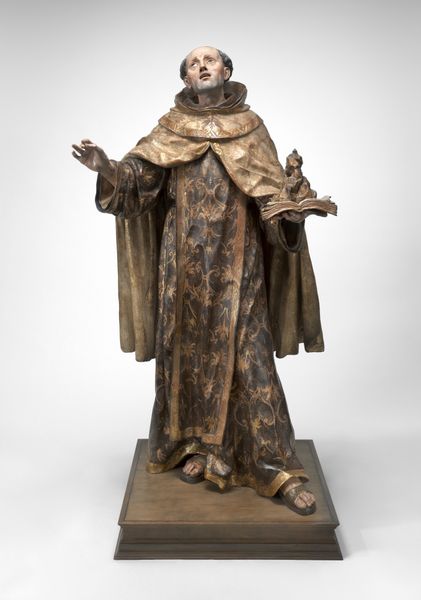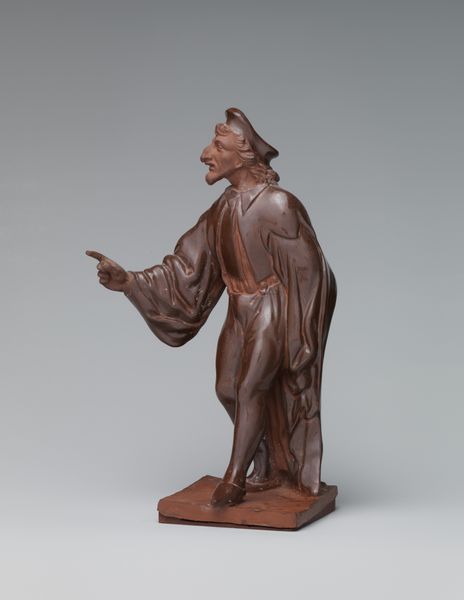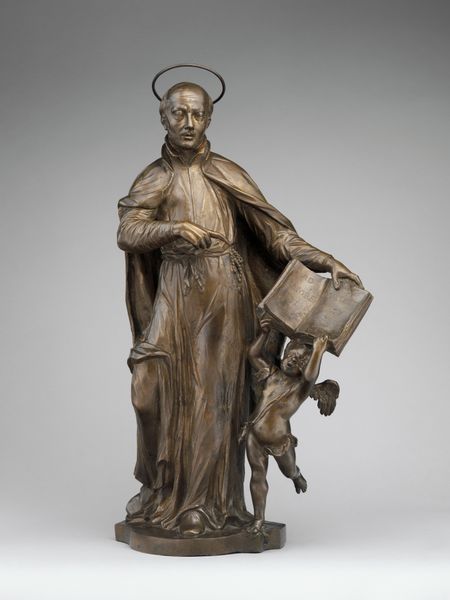
sculpture, wood
#
portrait
#
sculpture
#
sculpture
#
wood
Dimensions: height 27.5 cm, width 8.6 cm, depth 8 cm
Copyright: Rijks Museum: Open Domain
Curator: Let's consider this carved wood sculpture dating from 1800 to 1950. It's attributed to Eugène Lacomblé and titled "Monnik met kruis en boek (Willibrord?)", which translates to "Monk with cross and book (Willibrord?)". Editor: My first impression is the sense of introspection conveyed by the monk's bowed head. The muted color of the wood, combined with the subtle texture achieved through carving, brings to mind the solemn stillness often found in monastic life. Curator: Indeed. And the symbolic objects he carries are essential. The cross, a symbol of Christ’s sacrifice, and the book—likely a holy text—are standard attributes of monastic iconography. When interpreted through a lens of religious history, we understand this isn't merely a depiction of faith; it's also about power, literacy, and the church's role in disseminating knowledge during a certain historical period. It evokes centuries of conflict between religious and secular authorities, and even the oppression faced by those deemed heretical or who questioned the status quo. Editor: But what strikes me particularly are the linear details created by the robe's folds—how those parallel carvings give such volume and depth to the figure. I notice, too, the artist’s focus on texture—from the meticulously carved beard to the subtle tooling on the book. Those are artistic choices that amplify a mood of reflective gravity. The piece is undeniably spiritual, but is it because of purely artistic merit? Curator: That is a question worth pondering. Does our experience stem from the artist's compositional choices or the ingrained symbolism of Western religious art? How does our own culturally conditioned understanding influence the effect? The question the statue poses about identity, its possible link to the historical figure of Saint Willibrord who Christianized regions, reminds us that images often promote certain narratives about a people, time and place, for the purpose of affirming the right to lead or conquer. Editor: These explorations underscore the interplay between aesthetic design and broader narratives of identity and conviction. Curator: It truly highlights how understanding historical contexts enriches how we interpret what we see and feel in this statue.
Comments
No comments
Be the first to comment and join the conversation on the ultimate creative platform.
